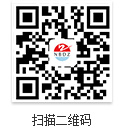Time is like an arrow, and the sun and the moon are like a shuttle. Since President Xi Jinping proposed the “Belt and Road Initiative” in 2013, it has been five years since it was launched. In the past five years, the construction of the “Belt and Road” has been progressing from the point of view, growing in the course of development, and thriving in cooperation, creating great opportunities for the development of the world economy and injecting positive energy into the world textile economy.
In 2013, President Xi Jinping successively proposed the “Silk Road Economic Belt” and “21st Century Maritime Silk Road” initiative, namely the “Belt and Road Initiative”, and in the second year it rose to one of the three national strategies.
After five years of comprehensive promotion and development, the “One Belt, One Road” construction has been transformed from an idea to an action, from a vision to a reality, and the results have been fruitful. We have gradually woven the Asia-Europe continent as the center, radiating the continents of the world, and connecting the world’s oceans. The cooperation network will build an international cooperation platform for the development of national development strategies along the “Belt and Road”, complementing each other's advantages, interconnecting and inclusive development. More than 100 countries and international organizations around the world actively supported and participated in the construction of the “Belt and Road”, and more than 80 countries and international organizations signed cooperation agreements with China.
According to statistics, in 2013-2017 China's trade in goods along the “Belt and Road” countries totaled more than US$5 trillion, and China's direct investment in countries along the route exceeded US$70 billion. In 2017, China’s import and export volume along the “Belt and Road” countries totaled 73.745 billion yuan, an increase of 17.8% compared with 2016. The direct investment amount of the countries along the “Belt and Road” was 14.4 billion US dollars, accounting for about a total of direct foreign direct investment in China. 12% of the total investment.
With the continuous advancement of the “Belt and Road” construction, the Chinese textile industry has also entered the global stage of layout. At present, Chinese enterprises set up textile and garment production, trade and product design enterprises overseas to have more than 100 countries and regions, covering key regions such as Southeast Asia, North America, Europe, Australia and Africa. The textile industry's foreign investment covers almost the entire textile and garment industry chain, from upstream raw materials such as cotton, pulp, and hemp, to intermediate products such as cotton spinning, wool spinning, and chemical fiber, to garments, home textile products, and textile machinery. Involved.
According to the statistics of the Ministry of Commerce, in 2013, the textile industry invested 429 million U.S. dollars along the “Belt and Road”, and in 2016 it increased to 2.299 billion U.S. dollars. From 2013 to the third quarter of 2017, China’s textile industry invested a total of 5.494 billion U.S. dollars along the “Belt and Road”. , accounting for 84.71% of the total investment in the textile industry in the same period.
From the perspective of investment area distribution, the transnational greenfield investment of production capacity is mainly based on Southeast Asian countries. The investment projects in emerging markets in Africa and countries and regions along the “Belt and Road” are gradually increasing. Through the overseas direct investment mergers and acquisitions, the global quality resource allocation is Most developed countries such as Europe and the United States.
Xu Yingxin, vice president of the China National Textile and Apparel Council and executive vice president of the Textile Industry Branch of the China Council for the Promotion of International Trade, summarized the four characteristics of the Chinese textile industry's “going out” over the past five years: First, foreign investment showed multi-regional and multi-industry And the accelerated development of multiple forms; second, the awareness of key enterprises to take the initiative to carry out international distribution; third, the form of foreign investment is more diversified, including greenfield investment, equity mergers and acquisitions, asset acquisitions and joint ventures; fourth is the government since 2017 With great supervision, foreign investment has returned to normal development.
In the past five years, the Chinese textile industry has actively integrated into the construction of the “Belt and Road” initiative, and the “action” has been frequent. The establishment of the China Textile International Capacity Cooperation Enterprise Alliance (hereinafter referred to as the Alliance) is a landmark event for the Chinese textile industry to systematically integrate into the “Belt and Road” construction. It is also a major turning point for the Chinese textile industry to shift from product export to export and international capacity cooperation. . At present, there are 107 member companies in the alliance, which basically covers the backbone of the international distribution of the textile industry chain, including national-level industry organizations and textile and garment associations in key textile provinces such as Jiangsu, Shandong and Guangdong. The members of the alliances united as one and worked together to make the entire alliance become a community of destiny for the internationalization of textiles, a joint fleet that rushed to the sea.
At the end of 2017, China Industrial Textiles Industry Association, China Chemical Fiber Industry Association, China Council for the Promotion of International Trade Textile Industry Branch jointly organized local associations and business delegations to investigate and research the South African market and investment environment. The picture shows the frank and honest communication and exchange between the representatives.
In the past five years, a series of “going out” movements in China's textile industry have never been faster and more efficient. The Chinese textile and garment entrepreneurs delegation visited Ethiopia, Egypt, Italy, the United States, Israel, Jordan, South Africa, Vietnam and Malaysia. More than 20 countries such as Uzbekistan. The alliance has also organized important activities such as “going out” conferences, key country trade matchmaking meetings, and investment promotion conferences. On May 12, 2017, under the active planning of the Alliance, the Ethiopian Prime Minister led more than 30 senior government officials to hold a meeting with representatives of 12 textile international production cooperation leaders including Sunshine Group, Huafang Group and Lianfa Group. The new opportunity for cooperation between China and Egypt textile industry has further stimulated the confidence and determination of the dominant textile enterprises to “go global” and promoted the positive interaction of the “One Belt, One Road” global layout.
In the past five years, the pace of China's textile industry has become more and more stable. For Chinese textile enterprises, the construction of the “Belt and Road” has become an inevitable choice for realizing the international development of enterprises and promoting the globalization of the industry. The construction of “One Belt and One Road” has also opened a new journey for China's textile industry, created new opportunities for development, enhanced new development momentum, and expanded new development space.
“China’s textile industry ‘going out’” has shown a steady progress in international production capacity. Through the international capacity cooperation, industry enterprises have carried out the global distribution of productivity and the global allocation of high-quality resources, and have a positive interaction with the domestic industrial transformation and upgrading. This is determined by the important position of the Chinese textile industry in the global textile and apparel industry. Sun Ruizhe, president of the China National Textile and Apparel Council, said that in the future, the Chinese textile industry will continue to make important contributions to the country's "One Belt, One Road" construction.
Ningbo Volkswagen Chemical Fiber Industry Co., Ltd. is a national medium-sized enterprise, a large industrial enterprise in Zhejiang Province, with an annual output of 68-1800D PP yarn filaments, polypropylene POY filaments, polypropylene plain yarns, polypropylene FDY filaments 15,000 tons, 1.5D-13D various Specifications of polyester staple fiber 25,000 tons. Ningbo Volkswagen Chemical Fiber Industry Co., Ltd. Long-term production and operation:PP yarn, polypropylene filament yarn, polypropylene FDY silk, polyester staple fiber, polypropylene full stretch yarn, polypropylene polypropylene yarn, is your reliable PP yarn manufacturer!


 Mr. Chen Fei (Mr.)
Mr. Chen Fei (Mr.) 86-574-63550733
86-574-63550733 86-574-63551022
86-574-63551022 dz@dzfibre.cn
dz@dzfibre.cn



